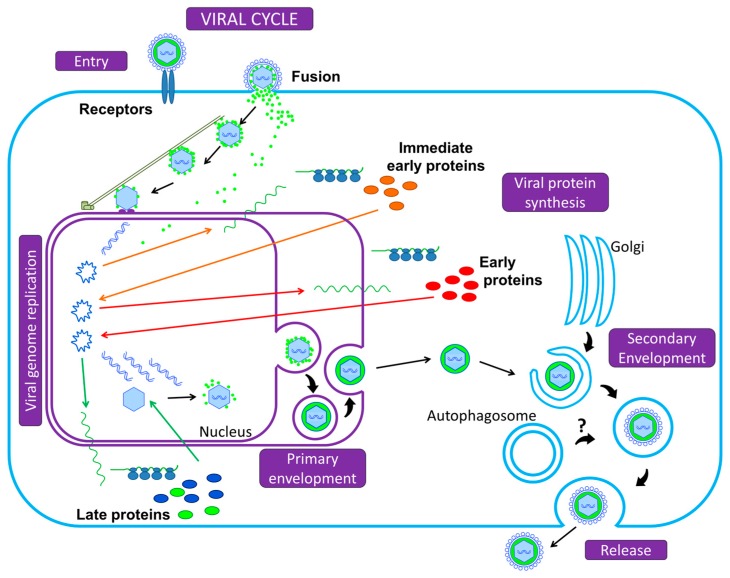Figure 1.
Summary of the Herpesvirus replication cycle. Initiation of infection begins with the adsorption of the viral particle to cell surface receptors and the virus enters the cell either by fusion of its envelope with the plasma membrane or by endocytosis, releasing the capsid and the tegument into the cytoplasm. Using the microtubule network, the nucleocapsid is transported to the nuclear pore, where the viral genome is released into the nucleus and circularizes. The viral DNA serves as a template for Pol II and leads to the production of mRNAs, expressed in three successive and coordinated phases. mRNAs are translated in the cytoplasm into viral proteins (α, or immediate-early; β, or early; and γ, or late proteins). Most of the late gene products contribute to the formation of the viral particle. DNA packaging into pre-assembled capsids takes place in the nucleus. This is followed by a primary envelopment of the nucleocapsids by budding through the inner nuclear membrane. The envelope of perinuclear virions then fuses with the outer nuclear membrane to release naked nucleocapsids into the cytoplasm (de-envelopment). Tegumented capsids acquire a “second” final envelope to become virions from post-Golgi membrane compartments. A role for autophagic membranes in envelopment and release of virions has been proposed for some herpesviruses. Once formed, virions are translocated to the cell surface within small vesicles using exocytosis machinery and released from the cells.

